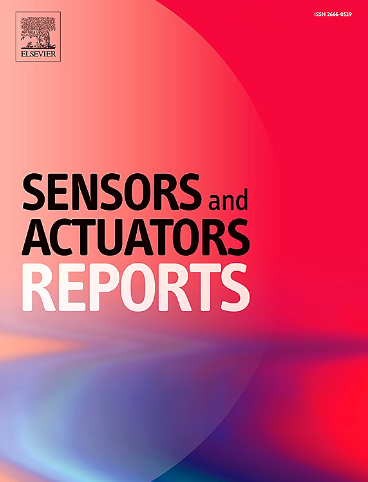Electrochemical sensor for the detection of imidacloprid using novel Cu-tetrazole MOF
IF 7.6
Q1 BIOTECHNOLOGY & APPLIED MICROBIOLOGY
引用次数: 0
Abstract
Designing sensitive and rapid sensing platforms for detecting pesticide residues is crucial for ensuring environmental and food safety. In this work, we report the synthesis of a novel Cu-Tetrazole Metal-Organic Framework referred to as KU-1 and its utilization for the development of an electrochemical sensor for the detection of imidacloprid (IMD) residues in food samples. The MOF structure consists of Cu ions and tetrazole ligands that extend to form 2D layers, which are further pillared by tetrazoles to create a 3D network. The KU-1 exhibits high stability, retaining crystallinity in various organic solvents and a range of pH, with thermal stability up to ∼300°C. The electrochemical sensing of IMD at KU-1 modified screen-printed electrode was investigated in detail, demonstrating the material's high electrocatalytic performance. The developed sensor allowed imidacloprid detection in the linear range of 0.1–10 μM with a detection limit of 0.089 μM and showed excellent selectivity for IMD against other pesticides. Detection of IMD residues was successfully validated in rice and tomato sample extracts and had a remarkable recovery of 97–101%, showcasing the electrode's practicality and reliability. This study highlights the potential of KU-1 as a promising material for constructing high-performance electrochemical sensors.

新型cu -四唑MOF电化学传感器检测吡虫啉
设计灵敏、快速的农药残留检测平台对于确保环境和食品安全至关重要。在这项工作中,我们报道了一种新的Cu-Tetrazole金属有机框架(KU-1)的合成,并将其用于开发用于检测食品样品中吡虫啉(IMD)残留的电化学传感器。MOF结构由Cu离子和延伸形成二维层的四唑配体组成,四唑配体进一步支撑形成三维网络。KU-1表现出高稳定性,在各种有机溶剂和pH范围内保持结晶度,热稳定性高达~ 300°C。详细研究了KU-1改性丝网印刷电极对IMD的电化学传感,证明了该材料具有良好的电催化性能。该传感器在0.1 ~ 10 μM的线性范围内检测吡虫啉,检出限为0.089 μM,对其他农药具有良好的选择性。稻谷和番茄提取液中IMD残留量的检测效果良好,回收率为97 ~ 101%,显示了该电极的实用性和可靠性。该研究突出了KU-1作为构建高性能电化学传感器的有前途的材料的潜力。
本文章由计算机程序翻译,如有差异,请以英文原文为准。
求助全文
约1分钟内获得全文
求助全文
来源期刊

Sensors and Actuators Reports
Multiple-
CiteScore
9.60
自引率
0.00%
发文量
60
审稿时长
49 days
期刊介绍:
Sensors and Actuators Reports is a peer-reviewed open access journal launched out from the Sensors and Actuators journal family. Sensors and Actuators Reports is dedicated to publishing new and original works in the field of all type of sensors and actuators, including bio-, chemical-, physical-, and nano- sensors and actuators, which demonstrates significant progress beyond the current state of the art. The journal regularly publishes original research papers, reviews, and short communications.
For research papers and short communications, the journal aims to publish the new and original work supported by experimental results and as such purely theoretical works are not accepted.
 求助内容:
求助内容: 应助结果提醒方式:
应助结果提醒方式:


